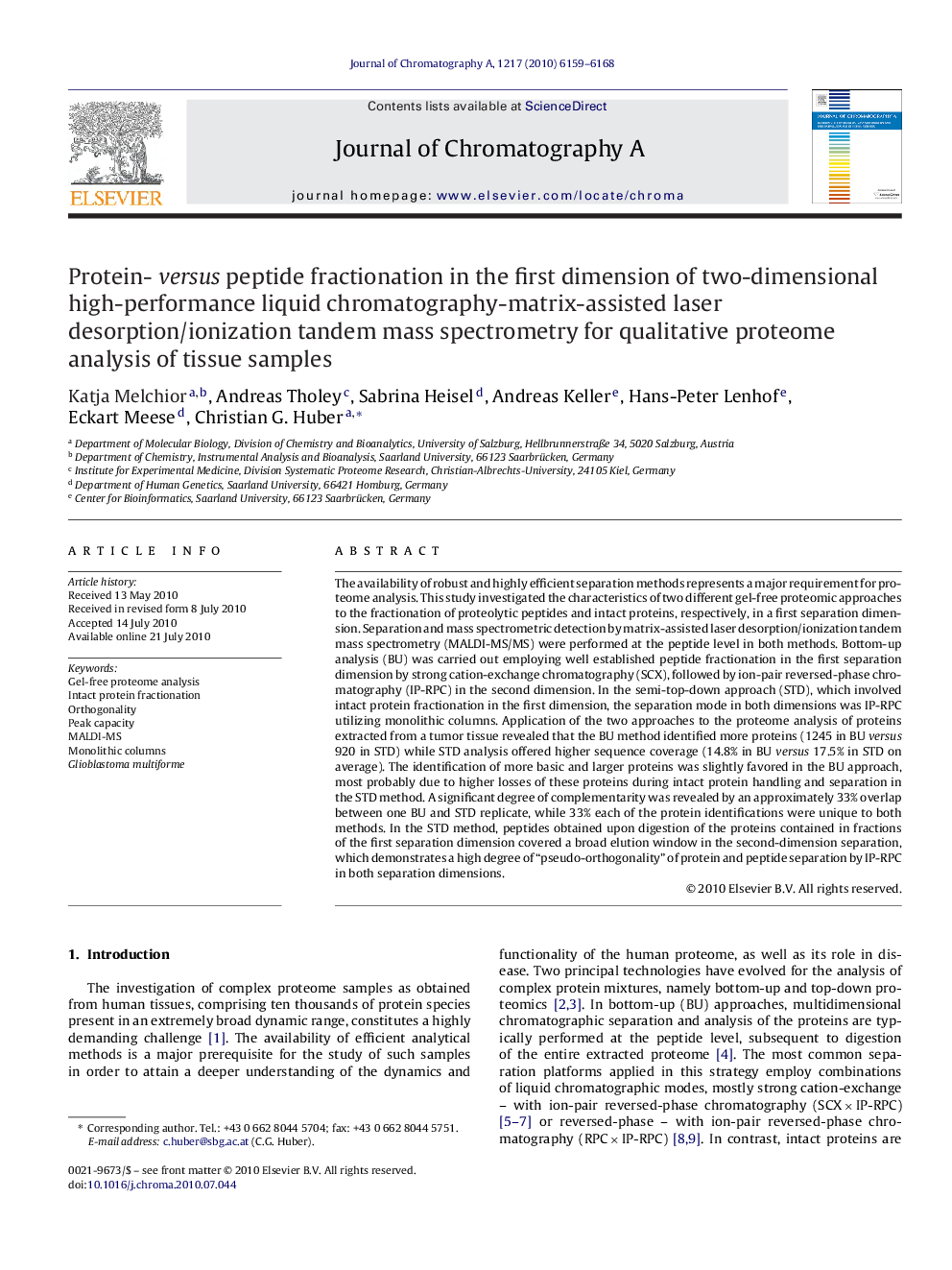| کد مقاله | کد نشریه | سال انتشار | مقاله انگلیسی | نسخه تمام متن |
|---|---|---|---|---|
| 1204426 | 965154 | 2010 | 10 صفحه PDF | دانلود رایگان |

The availability of robust and highly efficient separation methods represents a major requirement for proteome analysis. This study investigated the characteristics of two different gel-free proteomic approaches to the fractionation of proteolytic peptides and intact proteins, respectively, in a first separation dimension. Separation and mass spectrometric detection by matrix-assisted laser desorption/ionization tandem mass spectrometry (MALDI-MS/MS) were performed at the peptide level in both methods. Bottom-up analysis (BU) was carried out employing well established peptide fractionation in the first separation dimension by strong cation-exchange chromatography (SCX), followed by ion-pair reversed-phase chromatography (IP-RPC) in the second dimension. In the semi-top-down approach (STD), which involved intact protein fractionation in the first dimension, the separation mode in both dimensions was IP-RPC utilizing monolithic columns. Application of the two approaches to the proteome analysis of proteins extracted from a tumor tissue revealed that the BU method identified more proteins (1245 in BU versus 920 in STD) while STD analysis offered higher sequence coverage (14.8% in BU versus 17.5% in STD on average). The identification of more basic and larger proteins was slightly favored in the BU approach, most probably due to higher losses of these proteins during intact protein handling and separation in the STD method. A significant degree of complementarity was revealed by an approximately 33% overlap between one BU and STD replicate, while 33% each of the protein identifications were unique to both methods. In the STD method, peptides obtained upon digestion of the proteins contained in fractions of the first separation dimension covered a broad elution window in the second-dimension separation, which demonstrates a high degree of “pseudo-orthogonality” of protein and peptide separation by IP-RPC in both separation dimensions.
Journal: Journal of Chromatography A - Volume 1217, Issue 40, 1 October 2010, Pages 6159–6168